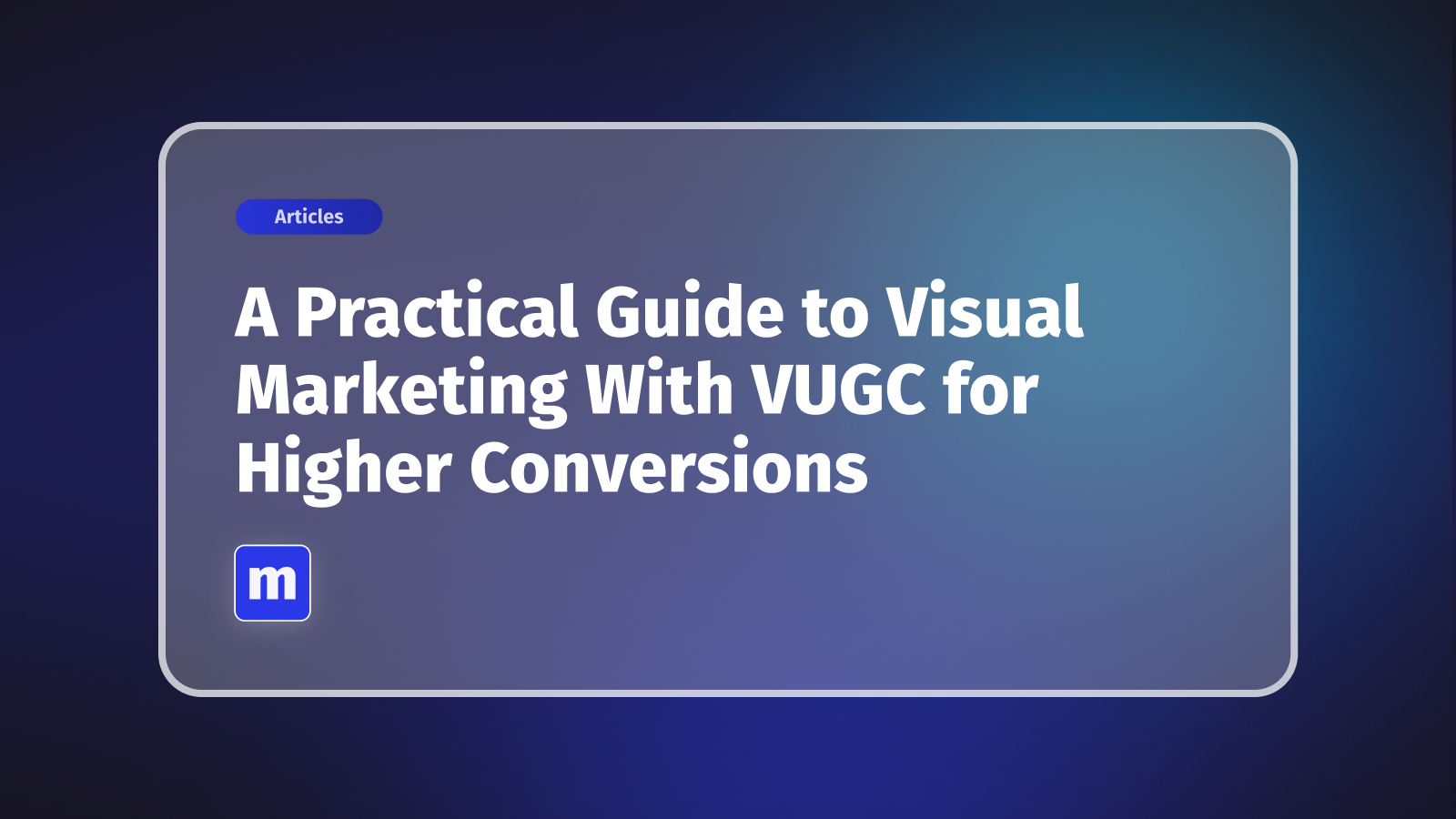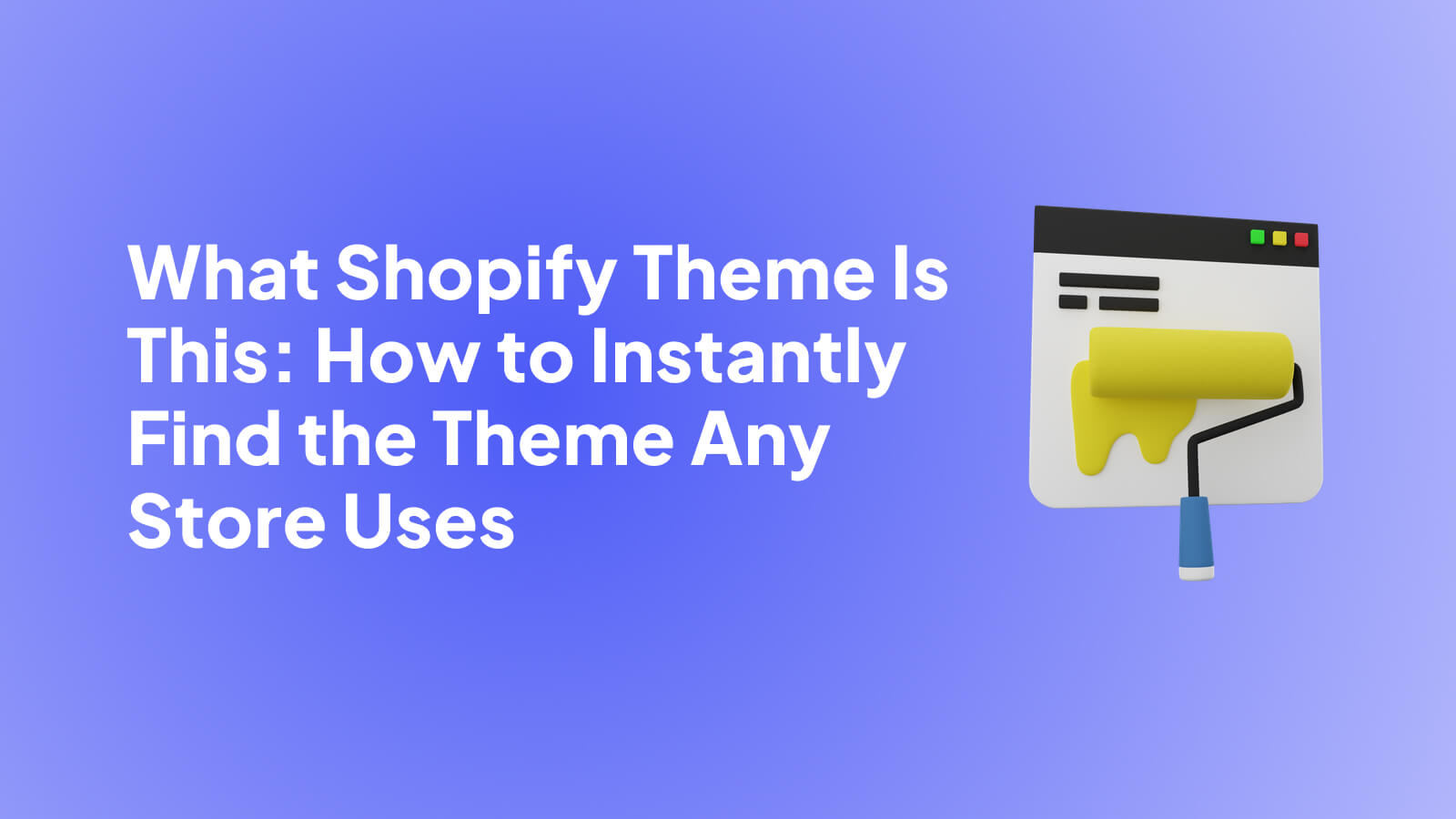.jpg)
Table of Contents:
- Introduction
- Understanding E-Commerce Marketing Strategies
- The Role of User-Generated Content in Modern E-Commerce
- Benefits of UGC in E-Commerce
- Integrating User-Generated Content into E-Commerce Strategies
- Case Studies of Successful UGC Integration
- Analyzing the Impact of UGC on Sales and Engagement
- Future Trends in User-Generated Content and E-commerce
Introduction
E-commerce marketing began as a direct digital extension of traditional retail marketing, primarily focusing on basic online visibility and sales. However, as technology advanced and consumer behaviors shifted, the strategies became more complex and personalized. Search engine optimization (SEO) and pay-per-click (PPC) advertising quickly became fundamental components, helping businesses to reach broader audiences. Meanwhile, email marketing and social media platforms opened new avenues for direct and personalized communication.
Today, amidst an ever-growing demand for authenticity and personalized experiences, user-generated content has emerged as a powerful tool in the arsenal of e-commerce marketers. UGC, which includes customer reviews, testimonials, photos, and videos shared by users, offers a layer of authenticity that traditional advertising struggles to match. This content not only enhances trust but also significantly influences buying decisions by providing real-life testimonials and proof of satisfaction from fellow consumers.
The rise of UGC represents a shift towards more consumer-driven marketing strategies, where customers become brand advocates and their experiences serve as a marketing medium. Integrating UGC into e-commerce strategies not only fosters greater engagement and loyalty but also boosts the overall effectiveness of marketing efforts by leveraging the voices of the most credible influencers: real users.
As we explore the various facets of e-commerce marketing strategies in this blog, we'll delve into how integrating user-generated content can transform challenges into opportunities, creating a more engaging and authentic shopping experience.
Understanding E-Commerce Marketing Strategies
E-commerce marketing strategies are designed to attract, engage, and convert online visitors into customers. These strategies encompass a variety of techniques and channels, each serving a unique role in the digital marketing ecosystem. Understanding these strategies is crucial for any business aiming to thrive in the competitive online marketplace.
- SEO (Search Engine Optimization) is foundational in e-commerce marketing. It involves optimizing your website and its content to rank higher in search engine results, making it more visible to potential customers. This includes using relevant keywords, optimizing website speed, and ensuring mobile responsiveness.
- Pay-Per-Click (PPC) advertising complements SEO efforts by allowing marketers to place ads in strategic locations across the web, paying only when a user clicks on them. This method is highly effective for driving immediate traffic and works well for promotions and launching new products.
- Email marketing remains one of the most effective strategies, providing a direct line of communication to your customers. Through personalized emails, businesses can promote products, share content, and nurture customer relationships, leading to increased retention and customer lifetime value.
- Affiliate marketing leverages partnerships with influencers and other websites to promote products. Affiliates earn a commission for every sale made through their referral, making it a cost-effective way to expand reach and influence.
- Social media marketing has transformed the way brands interact with their audience. Platforms like Facebook, Instagram, and Pinterest allow businesses to engage directly with consumers, showcase their products, and build a community around their brand.
Each of these strategies plays a crucial role in influencing consumer behavior and driving sales. However, the rise of user-generated content has introduced a new dimension to e-commerce marketing. UGC not only supports these traditional strategies but enhances them, providing authenticity and trust that resonate deeply with today’s consumers. As we progress into integrating UGC into e-commerce marketing, the synergy between established techniques and new approaches becomes clear, opening up innovative ways to enhance customer engagement and boost sales.
The Role of User-Generated Content in Modern E-Commerce
User-generated content (UGC) has become a cornerstone of modern e-commerce marketing, offering a genuine and engaging way for brands to connect with their customers. UGC includes any form of content—such as photos, videos, reviews, and social media posts—that is created voluntarily by users rather than by brands themselves. This content not only enriches the customer experience but also serves as a powerful marketing tool that can significantly influence purchase decisions.
Types of User-Generated Content
- Reviews and Testimonials: These are among the most straightforward forms of UGC. Positive reviews from satisfied customers can significantly enhance a product's credibility.
- Social Media Posts: When customers post images, videos, or comments related to a product or service, it amplifies the brand’s reach and can attract new customers.
- Unboxing Videos: These videos, where customers unpack and display products for the first time, provide authenticity and a raw look at what new buyers can expect.
- Q&A Sections: On product pages, where customers ask questions and other customers provide answers based on their experiences.
Here at Moast, we specialize in integrating UGC of all types into a brand’s marketing strategy, providing companies with a simple solution for an often overlooked avenue of marketing.
Benefits of UGC in E-Commerce
Building Trust and Credibility: Consumers tend to trust peer recommendations over advertising. UGC serves as social proof that a product is worth buying, directly influencing the trustworthiness of a brand.
Enhancing Product Discovery and Validation: UGC can introduce potential customers to products they might not have seen otherwise and provides real-life validation of a product’s quality and functionality.
Boosting SEO: Fresh, original content generated by users can improve search engine rankings by keeping the website content dynamic and focused on what customers are actually discussing.
Creating Community and Fostering Engagement: By sharing their own content, customers feel more connected to the brand. This sense of community can foster brand loyalty and encourage repeat purchases.
User-generated content is transforming how consumers interact with brands, offering a myriad of benefits that traditional marketing tactics struggle to match. It not only enhances the authenticity of marketing efforts but also significantly impacts sales and customer loyalty. In the next section, we will explore how businesses can integrate UGC into their existing e-commerce strategies to harness its full potential and drive greater engagement and sales.

Integrating User-Generated Content into E-Commerce Strategies
Integrating user-generated content (UGC) into e-commerce marketing strategies is not just beneficial; it's becoming essential for maintaining competitiveness in the digital marketplace. By leveraging UGC, brands can enhance their marketing campaigns, increase customer engagement, and build deeper connections with their audience. Here’s how businesses can effectively collect and utilize UGC to enrich their e-commerce strategies.
User-Generated Content
- Encourage Sharing: Create campaigns that encourage customers to share their experiences with your products. This can be facilitated through contests, hashtags, or simply by asking for feedback post-purchase.
- Incentivize Participation: Offer incentives such as discounts, loyalty points, or entry into contests for customers who post reviews or share photos and videos using your products.
- Leverage Social Media: Utilize social media platforms to engage with customers and encourage them to post content that reflects their personal experiences with your brand.
Utilizing UGC in Marketing Campaigns
- Product Pages: Incorporate reviews and customer photos directly on product pages to enhance credibility and provide real-world proof of satisfaction.
- Email Marketing: Feature customer testimonials and user-submitted images in your email campaigns to showcase the value of your products from a customer’s perspective.
- Social Media Marketing: Share user-generated content on your own social media channels to increase content reach and engage with a wider audience. This also demonstrates that you value customer input and engagement.
- Advertising: Use customer-generated photos and testimonials in your ads. Authentic user photos can often perform better than professional shots in digital advertising, as they are perceived as more relatable and genuine.
Case Studies of Successful UGC Integration
Many major brands have already begun to recognize the power of UGC and implement it as an integral part of their marketing strategies. One striking example is from beauty giant Sephora, which operates with a massive online shopping presence. Sephora operates a ‘Beauty Insider Community’, which they describe as a “one-stop destination to share beauty advice, inspiration, news, and recommendations with real people in real time.” In addition to this, Sephora’s Community Gallery features UGC from real customers in an aesthetically-pleasing, interactive design, which you can see below.
Integrating UGC requires a strategic approach that respects and values the customer’s voice. It's about creating a platform where users feel valued and engaged. By effectively collecting and utilizing UGC, brands not only enhance their marketing efforts but also build a community around their products. Sephora is a perfect example of a brand amplifying their customer’s voice, making them feel valued while simultaneously creating a community feeling when shopping with the brand.
In the next section, we will explore advanced techniques and tools that can further assist businesses in harnessing the full potential of user-generated content, ensuring it aligns with brand values and marketing objectives.
At Moast, we have extensive, proven experience in using UGC to benefit brand marketing strategies. Brands like Oru Kayak and Transformer Tables have used our services to elegantly integrate amazing UGC directly into their sales strategies.
Advanced Techniques and Tools for UGC Integration
As the e-commerce landscape evolves, so do the tools and techniques for effectively integrating user-generated content (UGC). These innovations not only simplify the process of collecting and showcasing UGC but also ensure that it aligns perfectly with brand values and marketing objectives. Here’s an overview of some advanced strategies and technologies that can maximize the impact of UGC.
Advanced Techniques for UGC Integration
- Content Moderation: Implementing robust moderation tools is crucial to maintain quality and relevance of UGC. Automated filters, AI-driven moderation, and community guidelines help manage the influx of user content while ensuring it aligns with brand standards.
- UGC Curation: Not all user content will fit your brand’s message or quality standards. Curating content allows you to select the most impactful posts that align with your marketing goals, enhancing the overall brand narrative.
- Personalization Engines: Utilize AI to deliver personalized UGC experiences to different segments of your audience. For example, showing users content that resonates with their past behavior or demographic profile can significantly increase engagement and conversion rates.
Essential Tools for UGC
- UGC Platforms: Specialized platforms like Yotpo or Bazaarvoice facilitate the collection, moderation, and display of UGC across e-commerce sites. These platforms offer tools to embed reviews and customer photos directly on product pages and are invaluable for scaling UGC efforts.
- Social Media Aggregators: Tools like TINT or Taggbox allow brands to collect and display social media posts that mention their products or use their branded hashtags, creating a dynamic feed of real-time customer content.
- Analytics and Measurement Tools: Incorporating analytics tools to track the performance of UGC is critical. These tools help measure engagement, conversion rates, and overall impact of UGC on sales, providing actionable insights to refine strategies.
Employing these advanced techniques and tools can dramatically enhance the effectiveness of UGC in your e-commerce marketing strategy. By ensuring that content is relevant, appropriately curated, and strategically displayed, businesses can foster greater trust and engagement, paving the way for deeper customer relationships and increased sales. In the next section, we will explore how to analyze the impact of UGC on sales and customer engagement, further solidifying its role as a transformative tool in e-commerce marketing.

Analyzing the Impact of UGC on Sales and Engagement
Understanding the impact of user-generated content (UGC) on sales and customer engagement is vital for optimizing your e-commerce marketing strategy. By leveraging analytics and performance metrics, businesses can quantify the value of UGC and refine their approaches for maximum effect.
Key Metrics to Measure UGC Impact
- Engagement Metrics: Track likes, shares, comments, and views on UGC posts. High engagement rates often indicate that content is resonating with your audience, which can increase brand visibility and influence purchase decisions.
- Conversion Rates: Monitor how UGC influences buying behaviors by comparing conversion rates of product pages with and without UGC. Many platforms offer tools to directly correlate specific user-generated content with sales outcomes.
- Customer Retention: Measure repeat purchase rates and customer loyalty indicators in scenarios where UGC is prominently used. Satisfied customers who engage with UGC are more likely to return, driven by a sense of community and trust in the brand.
Techniques for A/B Testing UGC
- Content Variation: Test different types of UGC, such as customer reviews versus user-submitted photos, to determine which has the strongest impact on specific customer segments.
- Placement Testing: Experiment with the placement of UGC on your site—such as homepage versus product pages—to find the most effective spots for driving engagement and conversions.
By continuously analyzing these metrics and adjusting strategies based on the insights gathered, businesses can enhance the effectiveness of their UGC integration. This data-driven approach not only boosts the ROI of marketing efforts but also ensures that UGC remains a powerful, evolving tool that adapts to consumer preferences and market trends. In the next section, we’ll look at future trends in UGC that could further shape the landscape of e-commerce marketing.
Future Trends in User-Generated Content and E-commerce
As technology advances, the integration of user-generated content (UGC) into e-commerce will continue to evolve, shaping new marketing landscapes. Emerging technologies like artificial intelligence (AI) and augmented reality (AR) are poised to revolutionize how UGC is created and consumed. AI could automate the curation of UGC, enhancing personalization by aligning content with individual user preferences at scale. Meanwhile, AR might allow consumers to visualize products in real-world settings through UGC, enhancing decision-making processes and engagement.
Furthermore, the role of influencer marketing within UGC is expected to deepen, with micro-influencers becoming increasingly influential due to their highly engaged audiences. As these trends take hold, e-commerce businesses will face new opportunities and challenges, necessitating agile adaptation strategies to harness the full potential of UGC and maintain a competitive edge in the digital marketplace.
Related content
Turn your videos into sales
Boost conversions by up to 30% by turning your existing TikToks and Reels into shoppable videos directly on your Shopify store.












